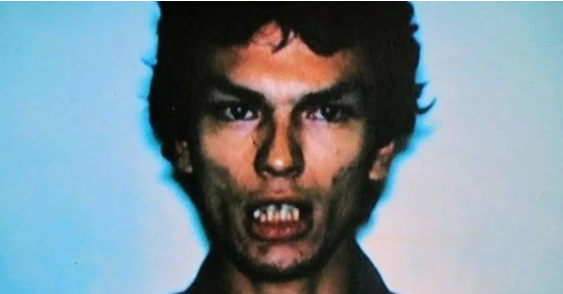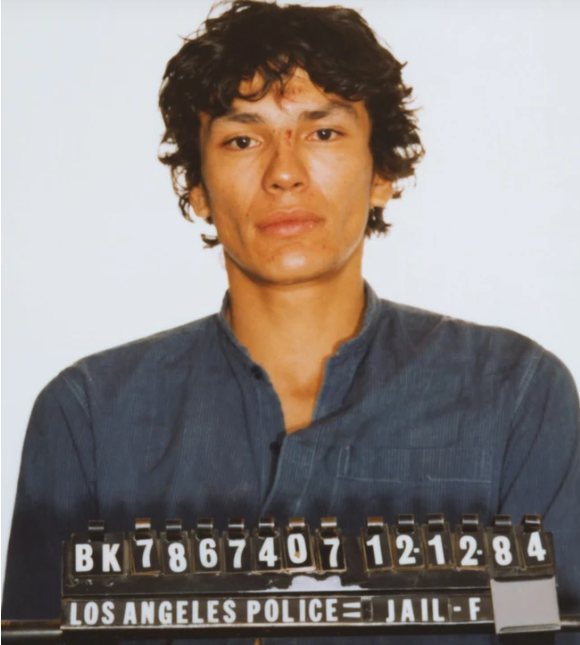Richard Ramirez – The Night Stalke

A Reign of Terror in 1980s California
During the mid-1980s, California was gripped by fear as a sadistic serial killer prowled the streets at night, breaking into homes and brutally attacking, raping, and murdering victims without a discernible pattern. The man behind this reign of terror was Richard Ramirez, a self-professed Satanist who became known as “The Night Stalker.” Between 1984 and 1985, Ramirez committed a series of increasingly violent crimes that left at least 13 people dead and dozens more traumatized.
Ramirez’s crimes were not only shocking in their brutality but also deeply disturbing in their randomness and symbolic references to Satanism. His killing spree would ultimately come to an end thanks to the combined efforts of law enforcement, media attention, and a brave community. However, the horror of his crimes left a permanent scar on the psyche of California and America as a whole.

Early Life and Troubled Beginnings
Richard Ramirez was born Ricardo Leyva Muñoz Ramirez on February 29, 1960, in El Paso, Texas. He was the youngest of five children in a working-class Mexican-American family. His father, Julian Ramirez, was a strict and sometimes abusive former police officer who worked on the Santa Fe railroad. From an early age, Richard showed signs of psychological and behavioral issues, including seizures, head trauma, and a fascination with violence.
A critical and dark influence in his life was his older cousin Miguel “Mike” Ramirez, a Vietnam War veteran who shared gruesome stories of torture, murder, and rape from his time in combat. Mike even showed young Richard photographs of decapitated women and enemy soldiers he claimed to have killed. In a shocking turn, Richard witnessed Mike murder his wife in front of him when he was just 13 years old.
From this moment on, Richard’s descent into darkness accelerated. He began using drugs, including LSD, and developed a deep interest in Satanism and the occult. By the time he was a teenager, Ramirez had already begun breaking into homes and committing theft.
The Beginning of a Killing Spree
Richard Ramirez’s first known murder occurred on April 10, 1984, when he broke into the home of 79-year-old Jennie Vincow in Los Angeles. He raped, stabbed, and nearly decapitated her. The brutality of the murder shocked police, but at the time, it was treated as an isolated incident. This would soon change.
Over the course of the next year, Ramirez committed a series of increasingly brazen and horrific crimes. Unlike many serial killers, he did not have a specific victim profile. His victims ranged in age from 9 to 83, and included men, women, and children of various ethnic backgrounds. His modus operandi included home invasions, sexual assaults, bludgeoning, stabbing, shooting, and strangulation. In many cases, he left behind Satanic symbols such as pentagrams, and demanded that his victims “swear to Satan” during their ordeals.
This unpredictability made him particularly terrifying. People felt unsafe in their homes regardless of who they were, where they lived, or what precautions they took.

Pattern of Terror
Some of Ramirez’s most infamous crimes include:
-
March 17, 1985 – Ramirez attacked Maria Hernandez outside her home in Rosemead, California. She survived by raising her hands and deflecting the bullet with her keys. Inside the home, her roommate Dayle Okazaki was not as lucky and was shot in the head.
-
March 27, 1985 – Ramirez broke into the home of Vincent and Maxine Zazzara in Whittier. He shot Vincent in his sleep and savagely attacked Maxine. He stabbed her repeatedly, gouged out her eyes, and left her body mutilated. This level of brutality and sadism would become characteristic of his later crimes.
-
May to August 1985 – Ramirez went on a spree across Southern California, entering homes late at night, shooting or stabbing residents, and often raping women and children. He frequently left victims alive to spread his message of fear and terror.
During this period, Ramirez’s crimes were covered heavily in the media. People began locking their doors and windows at night and purchasing weapons for self-defense. The city of Los Angeles was effectively paralyzed with fear.
The Satanic Element
What set Ramirez apart from other serial killers was his explicit embrace of Satanism. He often drew pentagrams at crime scenes and on his own body, professed loyalty to Satan, and quoted Satanic phrases during court appearances and interrogations. In one instance, he left a pentagram drawn on the wall and scrawled “Jack the Knife” – a reference to Jack the Ripper – at a crime scene.
Ramirez reveled in his dark image, telling one of his victims: “I am the devil.” His trial would later become a media spectacle in part due to his chilling appearance and statements.
The Investigation and Capture
By August 1985, Ramirez had committed over a dozen murders and multiple assaults. Law enforcement agencies from multiple counties were under immense pressure to stop him. A critical break came when Ramirez left a partial fingerprint on a stolen car. The print was matched to his records, and his identity was revealed to the public.
On August 30, 1985, Ramirez’s photo was published on the front page of newspapers and broadcast across television screens. The next day, he was recognized in East Los Angeles by several people in a neighborhood as he attempted to carjack a vehicle. A group of residents chased him down, beat him with a metal bar, and held him until the police arrived.
Ironically, after months of terrorizing a city, Ramirez was finally captured not by law enforcement, but by a community that had had enough.

The Trial
Ramirez’s trial began in 1989 and lasted over four years, one of the longest in California history. The court proceedings were highly publicized and deeply unsettling. Ramirez appeared in court with a pentagram drawn on his hand and frequently made chilling statements such as “Hail Satan” and “Evil has always existed.”
He was eventually convicted of 13 counts of murder, 5 attempted murders, 11 sexual assaults, and 14 burglaries. On November 7, 1989, he was sentenced to death and sent to San Quentin State Prison.
During the trial and after, Ramirez attracted a number of admirers, including women who wrote to him and even sought to marry him. In 1996, he married one such admirer, Doreen Lioy, while on death row.
Death and Legacy
Richard Ramirez spent over two decades on death row. He died on June 7, 2013, from complications related to B-cell lymphoma. He was 53 years old.
The legacy of Ramirez’s crimes remains deeply embedded in American true crime history. He is remembered not only for his brutality, but also for how his case transformed the way the media, law enforcement, and the public respond to serial killers. His ability to instill widespread panic across one of the largest cities in America is a testament to the fear he generated.
Psychological Profile
Psychologists and criminal profilers have analyzed Ramirez extensively. He exhibited signs of antisocial personality disorder, sadism, sexual paraphilia, and delusional beliefs rooted in Satanism. His early exposure to violence, head trauma, and drug use likely exacerbated his descent into homicidal behavior.
What made Ramirez especially dangerous was his unpredictability. Unlike most serial killers who follow specific patterns, Ramirez would break into homes at random, use different weapons, and vary his methods of murder and assault. This made him nearly impossible to profile early in the investigation.
Cultural Impact
The “Night Stalker” case has inspired numerous books, documentaries, and dramatizations. It has been featured in Netflix’s Night Stalker: The Hunt for a Serial Killer (2021), and referenced in series such as American Horror Story.
Ramirez became a symbol of 1980s America’s fears—of Satanic cults, of home invasions, and of random violence. He also raised awareness of the dangers of glamorizing killers in media, as his persona was embraced by certain elements of the public despite his horrific crimes.
Conclusion
Richard Ramirez’s crimes shocked and horrified the world, not only for their savagery but for their sheer randomness and demonic symbolism. He became the embodiment of evil for an entire generation, a predator who struck without warning and left behind a trail of shattered lives and broken families.
His capture and conviction were a testament to the power of community vigilance and the tireless work of law enforcement. But even in death, Ramirez remains a disturbing figure—one whose story serves as both a chilling reminder of human darkness and a cautionary tale about the power of fear and media fascination.





